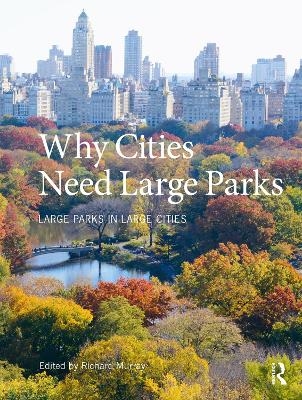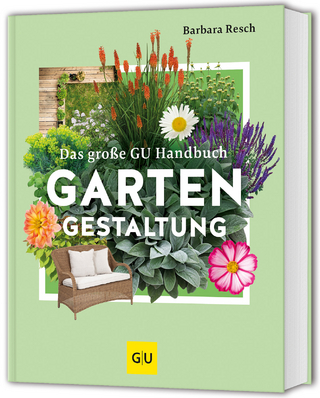
Why Cities Need Large Parks
Large Parks in Large Cities
Seiten
2021
Routledge (Verlag)
978-1-032-07297-5 (ISBN)
Routledge (Verlag)
978-1-032-07297-5 (ISBN)
- Titel z.Zt. nicht lieferbar
- Versandkostenfrei
- Auch auf Rechnung
- Artikel merken
The large parks and green infrastructure presented here illustrate the diverse uses and many benefits of large urban parks across 30 major cities. This book will help park managers, NGOs, landscape architects, and city planners to develop the green city of the future.
The large parks and green infrastructure presented here illustrate the diverse uses and many benefits of large urban parks across 30 major cities. Demand for large urban parks emerged at the height of the First Industrial Revolution in the mid-1800s, when large urban parks represented new ideas of accessible public spaces, often established on land previously owned by aristocracy, royalty or the army. They represented new ideas on how city life could be improved and how large green spaces could enhance urban citizens’ physical and psychological well-being (e.g. Birkenhead Park in Liverpool, Bois de Boulogne in Paris, Tiergarten in Berlin and Central Park in New York City). Today, large urban parks are habitats for biodiversity and spaces of climate change adaptation. For people living in cities, this biodiversity may represent high cultural, recreational and aesthetic values, but is also important for other aspects of health and well-being, for example by reducing the urban heat island effect, air pollution and risks of flooding. At a time when we are seriously reconsidering how we live in cities and our urban quality of life, while also grappling with serious challenges of climate change, the authors of this book detail the much-needed evidence, pathways and vision for a future of more liveable, resilient cities where large urban parks are at the core. This book will help park managers, NGOs, landscape architects and city planners to develop the green city of the future.
The large parks and green infrastructure presented here illustrate the diverse uses and many benefits of large urban parks across 30 major cities. Demand for large urban parks emerged at the height of the First Industrial Revolution in the mid-1800s, when large urban parks represented new ideas of accessible public spaces, often established on land previously owned by aristocracy, royalty or the army. They represented new ideas on how city life could be improved and how large green spaces could enhance urban citizens’ physical and psychological well-being (e.g. Birkenhead Park in Liverpool, Bois de Boulogne in Paris, Tiergarten in Berlin and Central Park in New York City). Today, large urban parks are habitats for biodiversity and spaces of climate change adaptation. For people living in cities, this biodiversity may represent high cultural, recreational and aesthetic values, but is also important for other aspects of health and well-being, for example by reducing the urban heat island effect, air pollution and risks of flooding. At a time when we are seriously reconsidering how we live in cities and our urban quality of life, while also grappling with serious challenges of climate change, the authors of this book detail the much-needed evidence, pathways and vision for a future of more liveable, resilient cities where large urban parks are at the core. This book will help park managers, NGOs, landscape architects and city planners to develop the green city of the future.
Richard Murray has been an environmental activist since the 1960s. He is President of the Swedish Ekoparken Association (Forbundet for Ekoparken) and is the Co-chair of Large Urban Parks Committee of the World Urban Parks Association. He has a PhD in political economy from the University of Stockholm.
1. Visions of Urban Green
2. Quality of Life
3. Ecosystem Services
4. Social Cohesion
5. City Meets Nature
6. Heritage and Identity
7. Design for All
| Erscheinungsdatum | 02.12.2021 |
|---|---|
| Zusatzinfo | 250 Halftones, color; 250 Illustrations, color |
| Verlagsort | London |
| Sprache | englisch |
| Maße | 210 x 280 mm |
| Gewicht | 1060 g |
| Themenwelt | Sachbuch/Ratgeber ► Natur / Technik ► Garten |
| Naturwissenschaften ► Biologie ► Ökologie / Naturschutz | |
| Naturwissenschaften ► Geowissenschaften ► Geografie / Kartografie | |
| Sozialwissenschaften ► Soziologie | |
| Technik ► Architektur | |
| ISBN-10 | 1-032-07297-0 / 1032072970 |
| ISBN-13 | 978-1-032-07297-5 / 9781032072975 |
| Zustand | Neuware |
| Informationen gemäß Produktsicherheitsverordnung (GPSR) | |
| Haben Sie eine Frage zum Produkt? |
Mehr entdecken
aus dem Bereich
aus dem Bereich
Obst- und Ziergehölze, Stauden, Kübel- und Zimmerpflanzen richtig …
Buch | Hardcover (2023)
Gräfe und Unzer (Verlag)
CHF 49,90
erfolgreich gärtnern mit dem Erfahrungsschatz vergangener Zeiten
Buch | Hardcover (2025)
Gräfe und Unzer Verlag GmbH
CHF 34,95
Buch | Hardcover (2025)
Gräfe und Unzer Verlag GmbH
CHF 44,75


